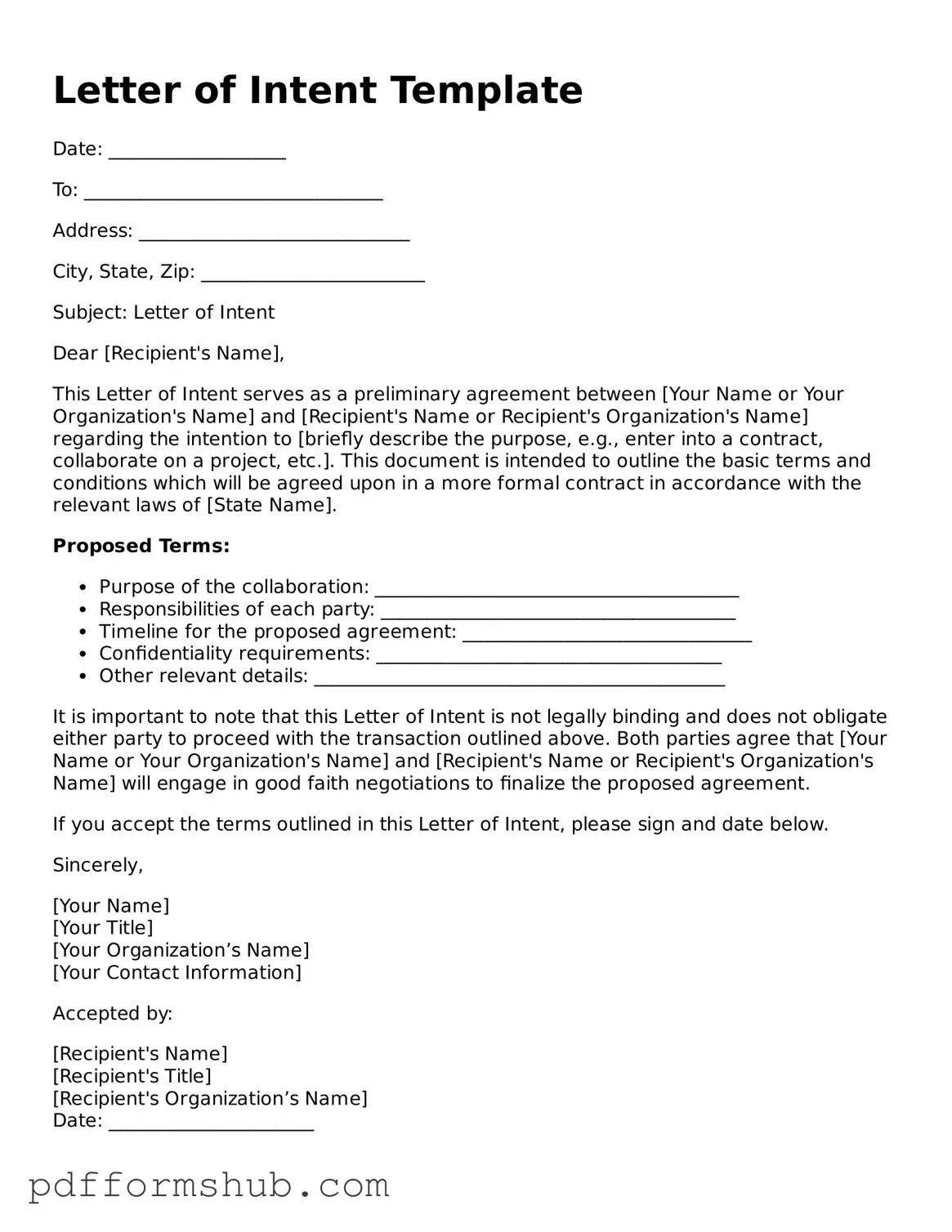The Letter of Intent (LOI) serves as a crucial document in various business and legal transactions, outlining the preliminary understanding between parties before final agreements are established. It typically addresses key aspects such as the purpose of the agreement, the terms being negotiated, and the expectations of each party involved. Often utilized in real estate deals, mergers, and acquisitions, the LOI can set the stage for a successful partnership by clarifying intentions and reducing the likelihood of misunderstandings. This document may include timelines, confidentiality clauses, and conditions that must be met for the deal to proceed, thereby offering a framework for future discussions. While not legally binding in most respects, the LOI reflects the seriousness of the parties’ intentions and can pave the way for more detailed contracts. Understanding the nuances of this form is essential for anyone looking to navigate the complexities of business negotiations effectively.
